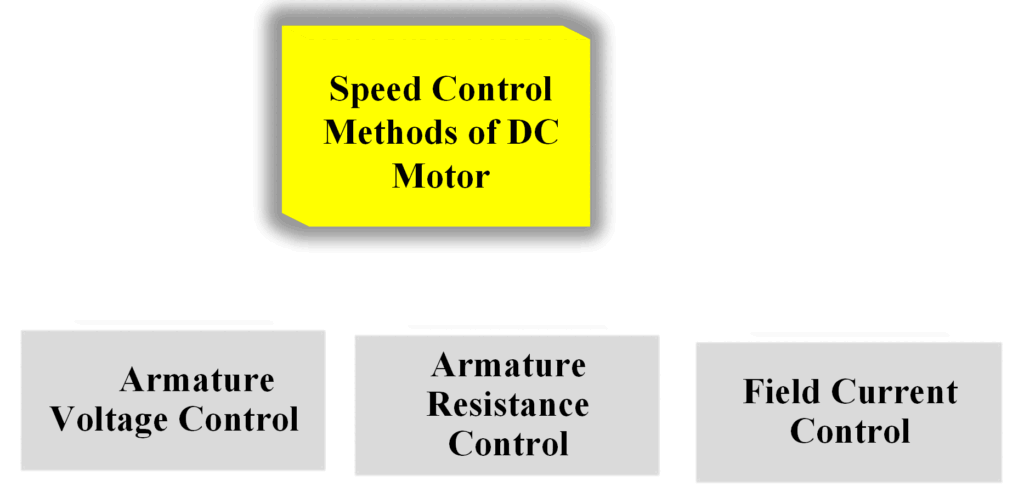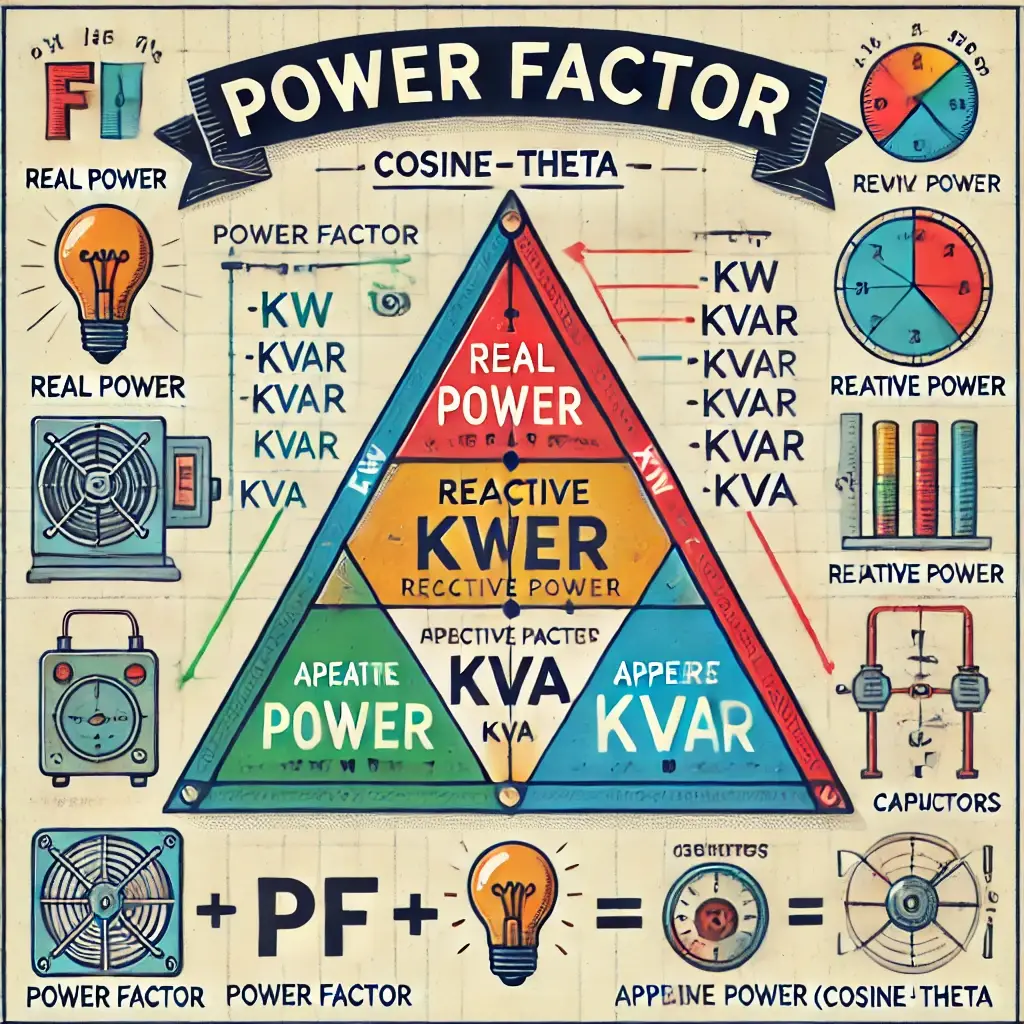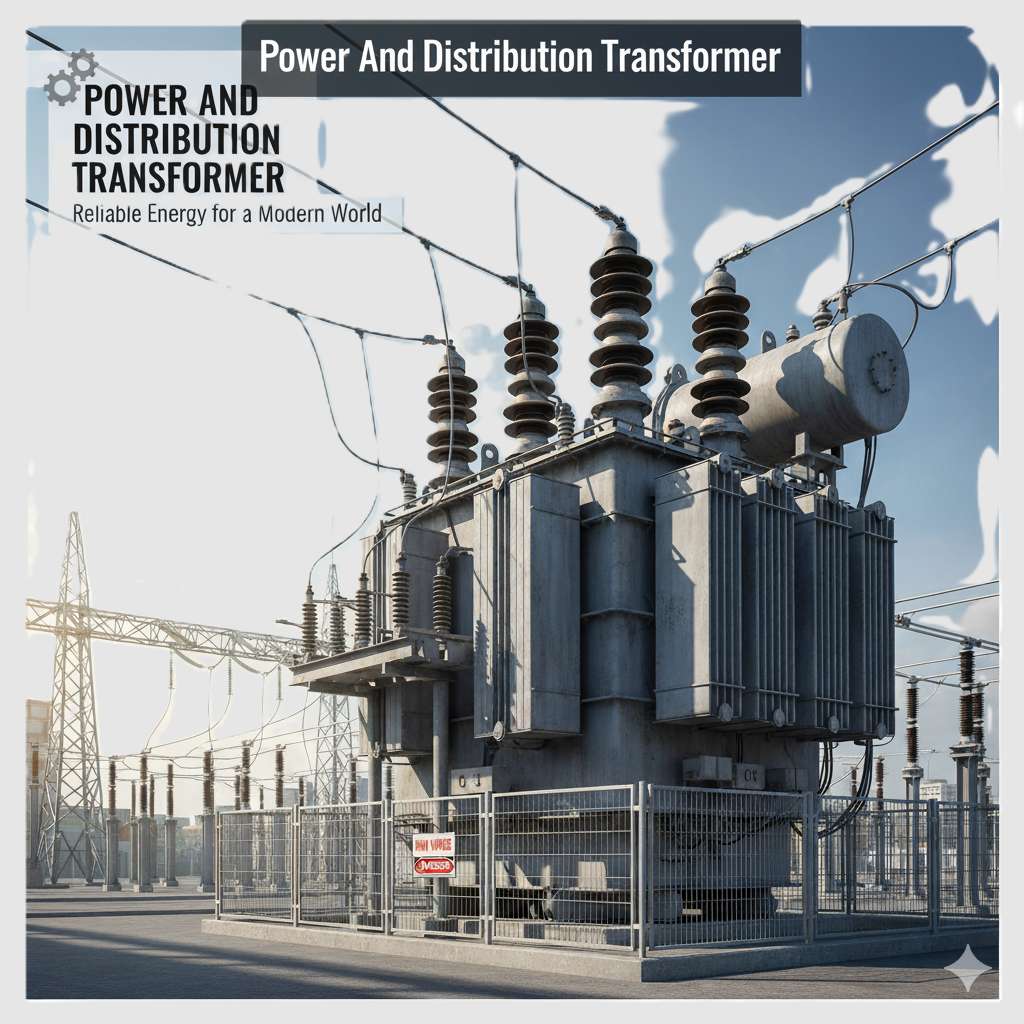Table of Contents
What is DC Motor Speed Control?
Every electric motor has a fixed speed written on its nameplate. This is called the rated speed. It tells us how fast the motor is supposed to run when it’s working normally.
But in real life, things keep changing. When the load on the motor changes — like if you put more weight on it or remove some — the motor’s speed also changes naturally. This is a normal part of how motors work.
However, sometimes we don’t just want the speed to change on its own. In many machines and factories, we need to control the speed on purpose. One common example is DC motor speed control.
DC motors are widely used in various machines because they offer simple and smooth speed control. With a DC motor, we can easily make the motor run slower or faster depending on our need. This helps in:
- Increasing or decreasing production speed
- Achieving smoother and safer machine operation
- Maintaining accuracy and product quality
There are different ways to control the speed of a DC motor:
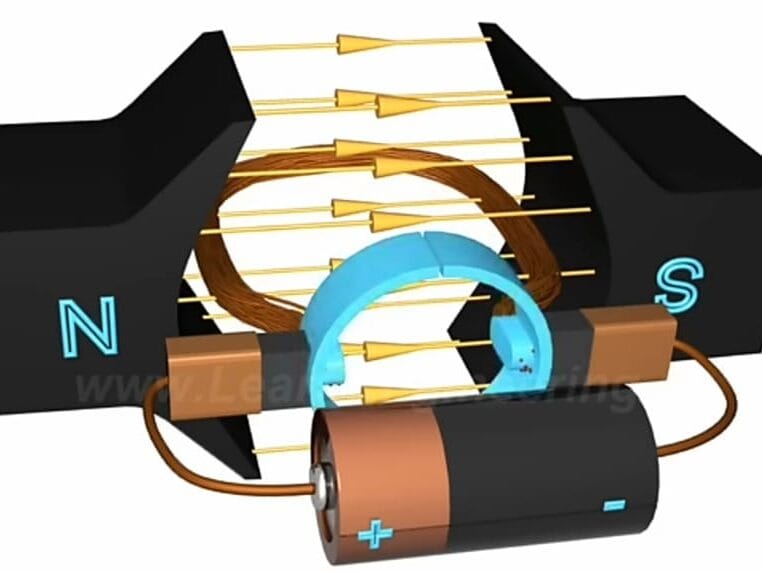
- Varying the voltage: Lower voltage makes the motor run slower, and higher voltage makes it run faster.
- Changing the field current: Adjusting the magnetic field in the motor also changes its speed.
- Using electronic controllers: Modern machines use special speed control circuits to adjust the motor speed precisely.
Rotor Speed and Its Control –
Rotor Speed (Angular Speed): Rotor speed is the speed at which the motor’s rotor rotates. It is usually expressed in radians per second (rad/s) and denoted by the symbol ω (omega). It tells us how fast the motor shaft is spinning. In many practical applications like fans, machines, toys, and robots, knowing the rotor speed helps us understand how fast the machine is working.
Voltage Constant (Back EMF Constant): This is a special value that links how fast the motor spins with how much voltage it creates. It is often written as Ke. When the motor turns, it acts like a small generator and produces a voltage called back EMF. The faster the motor spins, the higher this voltage becomes. The voltage constant helps engineers know the exact relationship between speed and voltage.
Conversion to Rotations Per Minute (r.p.m.): Rotor speed in radians per second can be easily converted into rotations per minute (r.p.m.) using this simple formula:
N = (ω × 60) / (2π)
Here,
- N is the rotor speed in r.p.m.
- ω is the rotor speed in rad/s
- π is approximately 3.1416
This formula helps us know how many full turns the rotor makes every minute.
How to Control Rotor Speed in a DC Motor: Speed control in DC motors is very important in everyday machines like electric cars, elevators, and home appliances. DC motor controllers use reliable and smart ways to adjust motor speed safely and smoothly. There are three main methods:
- By Varying the Armature Circuit Resistance:
- When we add more resistance, it slows down the current, so the motor runs slower.
- When we reduce the resistance, more current flows, and the motor runs faster.
- This is often used for small changes in speed or in older systems.
- By Varying the Main Magnetic Field (φ – Phi):
- The magnetic field controls how much force the motor generates.
- A stronger magnetic field slows down the rotor.
- A weaker field lets the motor spin faster.
- This method is also called field weakening, and it’s used when high speed is needed.
- By Varying the Input Voltage (Vt) to the Armature:
- This is the most common and smoothest method.
- Increasing the voltage makes the motor spin faster.
- Decreasing the voltage slows it down.
- Kayworld controllers often use this method for precise speed control in modern systems.
Note: All three methods can be used together or separately, depending on what the motor needs to do. These techniques are useful in all types of DC motors, from small toy motors to large industrial machines.
PWM DC Motor Speed Control
What is PWM? PWM stands for Pulse Width Modulation. It may sound big, but it’s actually very simple. PWM means turning the power ON and OFF very quickly to control how fast the motor spins. Instead of sending full power all the time, we send power in small parts.
Think of it like switching a light ON and OFF really fast. If it’s ON more than it’s OFF, the light looks bright. If it’s OFF more than it’s ON, it looks dim. We do the same with motors to control their speed.
Why Use PWM to Control DC Motor Speed? PWM is a smart way to control motor speed because:
- It saves energy.
- The motor runs smoothly.
- It doesn’t get hot like other methods.
- It gives us very good speed control.
How Does a PWM Motor Control Circuit Work? Let’s look at a simple example:
- PWM Signal: We use a small circuit (or a microcontroller like Arduino) to create the PWM signal.
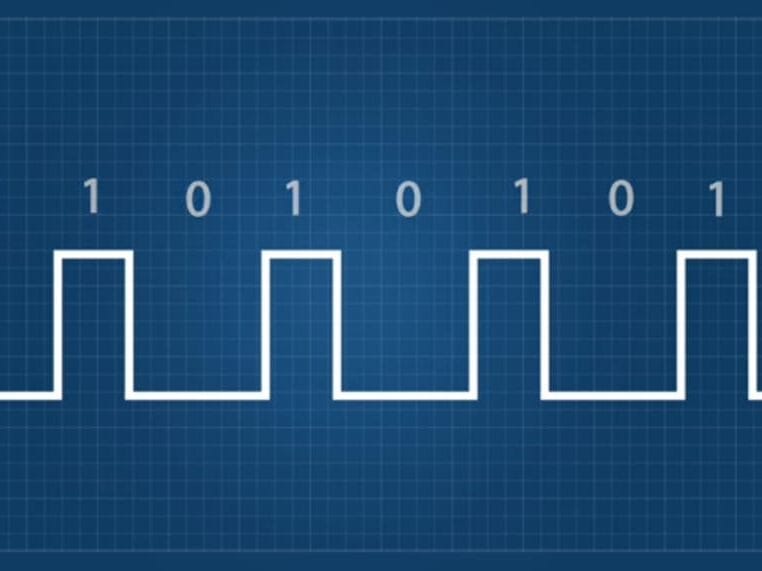
- Transistor (Switch): A transistor works like a gate. It turns ON and OFF with the PWM signal.
- Motor: The motor is connected to the transistor. It gets power in short bursts.
So when the PWM signal is ON 70% of the time and OFF 30% of the time, the motor runs at 70% speed. If it’s ON only 20% of the time, the motor runs slow.
PWM DC Motor Speed Control Circuit: It is perfect for students, hobbyists, and even engineers. Here’s how it works:
- It uses a special IC (timer or microcontroller) to generate the PWM signal.
- A strong transistor or MOSFET is used to switch the motor ON and OFF.
- The speed can be adjusted using a simple knob or a small digital controller.
circuit:
- You can control small toy motors or large machine motors.
- You get smooth and quiet motor movement.
- The circuit is safe and long-lasting.
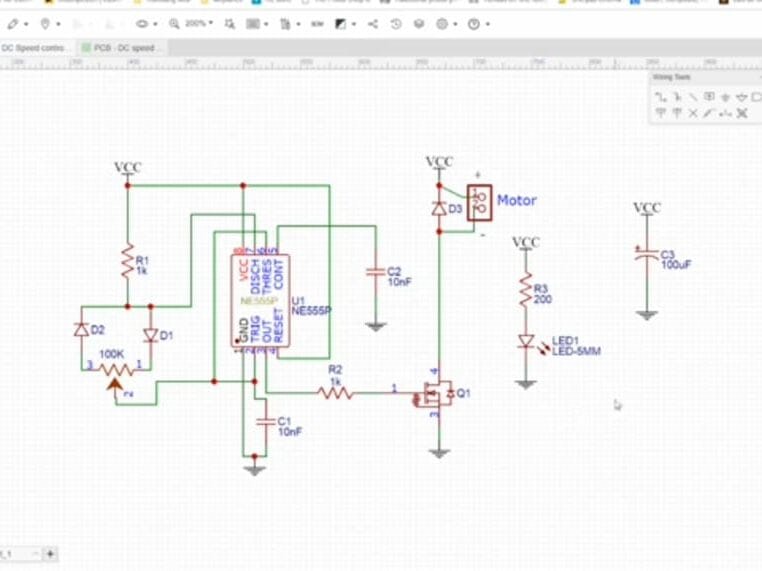
Example for Kids: Imagine you’re blowing on a pinwheel. If you blow full speed (100%) it spins fast. If you blow gently (20%) it spins slowly. PWM is like blowing in short, quick puffs.
Simple PWM Circuit Diagram: [Draw a simple block diagram with:
- PWM Source (like Arduino or Kayworld controller)
- Transistor (labeled as switch)
- Motor connected to the transistor and battery]
Where is PWM Used?
- Toy cars
- Fans
- Robots
- Electric bikes
- Home appliances
Final Words: PWM is an easy, safe, and smart way to control how fast a DC motor spins. PWM circuit helps you do this easily with great results. Kids, hobbyists, and engineers use it to make fun and useful projects. Now you know that even a small trick like turning power ON and OFF quickly can control big things!
Arduino-Based DC Motor Velocity Regulation:
Introduction Have you ever seen a fan speed up or slow down with the turn of a knob? That’s called speed control. In this guide, we will learn how to control the speed (also called velocity) of a DC motor using an Arduino. Don’t worry if you are new to electronics—this guide is made just for you! And to make things even better, we’ll see how motor control technology can make our setup smarter and more powerful.
What is a DC Motor? A DC motor is a small machine that spins when we give it electric power. It is used in toys, fans, robots, and many other things. The faster the motor spins, the faster your toy car runs or your robot moves.
What is Arduino? Arduino is a small, smart board that can control lights, motors, and sensors. It is like a brain that follows the instructions we give it. We can use Arduino to tell a motor how fast to go or when to stop.
Why Use Arduino to Control a Motor? Using Arduino, we can tell the motor how fast to spin. We can even make it change speed while it is running. That is useful in robots, cars, or anything that moves.
Advantage Kayworld offers advanced motor control modules that work perfectly with Arduino. These modules have better power efficiency, smoother speed change, and built-in protection. So when we use Kayworld motor drivers with Arduino, our motor becomes smarter, safer, and more reliable. For beginners and schools, this makes learning and experimenting safer and easier.
Things You Need
- Arduino board (like Arduino Uno)
- DC motor
- Kayworld motor driver (or L298N)
- Power supply (like a battery)
- Wires
- Breadboard (optional)
- Potentiometer (a knob to change speed)
- Connect the potentiometer to A0 pin of Arduino.
- Connect motor driver IN1, IN2, and ENA to Arduino pins.
- Connect the motor to the motor driver.
How It Works
- The knob gives a number from 0 to 1023.
- Arduino changes that number to 0 to 255, which controls the motor speed.
- The motor driver (like the one from Kayworld) sends power to the motor as told by the Arduino.
- This setup is perfect for students and beginners because it is safe, simple, and very effective.
Variable Frequency Drives for Brushless Motors:
If you’ve ever played with a remote-controlled car, seen a ceiling fan, or watched a robot move—chances are, you’ve already seen a brushless motor in action. These small but powerful motors are used in many everyday machines.
To control their speed and power safely, we use something called a Variable Frequency Drive or VFD. Don’t worry, it sounds complicated, but we’ll explain everything in a way even a child can understand. Kayworld makes this even easier with their smart and beginner-friendly VFDs designed specially for brushless motors.
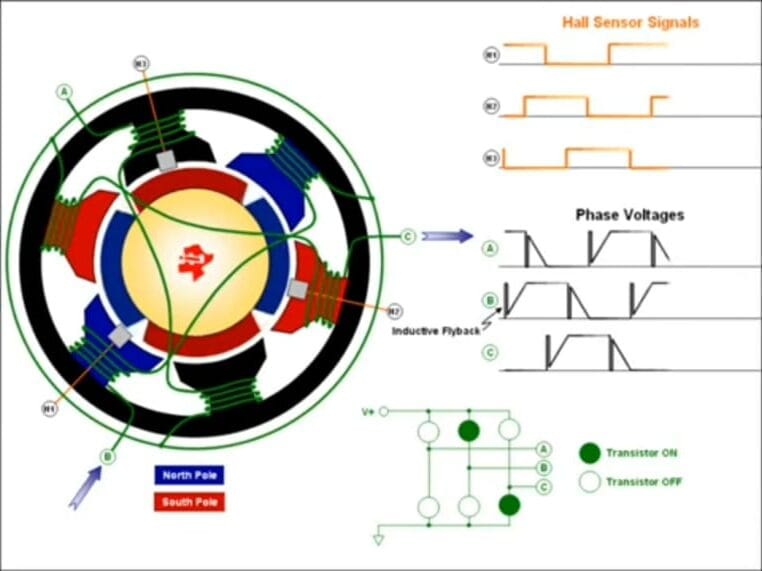
What is a Brushless Motor?
A brushless motor is a type of electric motor that works without any brushes. Unlike old motors that have tiny brushes inside, brushless motors are smoother, faster, and last longer because there’s no friction from brushes.
Example: Your computer fan, drone motor, or electric bike motor may all use brushless motors.
What is a VFD (Variable Frequency Drive)?
A VFD is a special device that controls the speed of a motor. It changes the power going into the motor to make it spin slower or faster.
Think of it like the volume knob on a radio. When you turn the knob, the music gets louder or softer. A VFD does the same thing with motor speed. VFDs are designed to do this in a safe, smooth, and efficient way.
Why Do We Need a VFD for Brushless Motors?
- To control the speed of the motor easily
- To save electricity
- To protect the motor from overheating
- To make machines run smoothly
- To increase the motor’s lifespan
Without a VFD, the motor may run too fast or too slow, which could damage it or waste energy. Kayworld VFDs help avoid these problems by giving you full control over your motor.
How Does a VFD Work?
A VFD changes the frequency of the electricity sent to the motor. The higher the frequency, the faster the motor spins. The lower the frequency, the slower it spins.
Here’s a simple diagram:
[ Wall Power ] → [ VFD ] → [ Brushless Motor ] → [ Movement ]The VFD sits between the power source and the motor, controlling how fast or slow the motor turns.
How to Choose the Right VFD for a Brushless Motor
Choosing the right VFD is like choosing the right shoes—you need the correct size and type. Kayworld makes this easy by offering different models for different needs.
Here are the simple steps:
1. Know Your Motor Type
Make sure your motor is brushless and check if it is AC or DC. Most brushless motors used with VFDs are three-phase AC motors. Kayworld provides options for both AC and DC brushless motors.
2. Check the Motor Voltage
Look at your motor’s label. Does it say 24V, 48V, or 230V? Your VFD must match this voltage. The product chart helps you match the right VFD with your motor.
3. Check the Motor Power (Watts or HP)
Find out how powerful your motor is. VFDs are rated in Watts or Horsepower (HP). Pick a VFD that can handle a little more than your motor’s rating. Kayworld always recommends choosing a VFD with at least 10–20% extra capacity.
4. Current Rating (Amps)
Make sure the VFD can give enough current (Amps) to the motor without getting hot or damaged. Kayworld VFDs have built-in protection to shut off automatically if too much current is used.
5. Easy Controls
Choose a VFD with simple buttons or a small screen. Some even have remote controls. VFDs are designed with beginner-friendly digital panels and clear instructions.
6. Safety Features
Pick a VFD that has built-in protection against overheating, short circuits, and overloading. Kayworld includes all these safety features in their VFDs.
Where are Brushless Motors with VFDs Used?
- Electric cars
- Fans and blowers
- Pumps
- Elevators
- Robots
- Air conditioners
- Home automation systems
- Farming tools and solar equipment
Thyristor Controlled Rectifiers in Motor Applications
What is a Thyristor? A thyristor is a special electronic switch. It controls how electricity flows in a circuit. When we turn it ON, it allows electricity to pass. When we turn it OFF, it stops the electricity. We use thyristors in many machines to control how much power they get.
What is a Rectifier? Electricity that comes from a wall socket is AC (Alternating Current). But motors usually need DC (Direct Current). A rectifier is a device that changes AC to DC. When we use thyristors in a rectifier, we can control how much DC we get from the AC input.
What is a Thyristor Controlled Rectifier? It is a rectifier that uses thyristors to control the output. It helps us adjust how much DC voltage goes to the motor. This is useful when we want to change the motor’s speed or power. Thyristor-controlled rectifier motors use this exact principle. They are built to safely manage speed and performance in both small and large machines.
Why Do We Use It in Motors? Sometimes we want a motor to run slowly. Sometimes we want it to run fast. A thyristor-controlled rectifier helps us do that. It controls how much voltage goes to the motor, so the motor runs exactly how we want. systems provide smooth speed control and help save electricity, which is very helpful in homes, factories, and public transport.
How Does It Work?
- AC power comes in.
- The thyristor turns ON at the right time.
- This allows only part of the AC wave to go through.
- The rectifier changes this part of AC into DC.
- The motor gets DC voltage and starts to run.
- Kayworld controllers watch and manage each step to ensure smooth and safe operation.
Simple Example: Imagine you have a toy car with a motor. If you always give it full power, it runs very fast. But sometimes, you want it to go slow. If we use a thyristor controlled rectifier, we can give the motor less power. Now the toy car moves slowly and safely. Kayworld motors in electric carts and mini conveyor belts use the same idea, just on a bigger scale.
Where Are They Used?
- Electric trains
- Fans and pumps
- Conveyor belts in factories
- Elevators and lifts
- Kayworld electric systems in schools, malls, and hospitals
Advantages:
- We can change the motor speed easily
- Saves energy
- Smooth starting and stopping
- Long motor life
- Safe for children and beginners to operate
A Simple Diagram:
[AC Supply] ---> [Thyristor] ---> [Rectifier] ---> [DC Motor]In Simple Words, A thyristor-controlled rectifier is like a volume knob for motors. Just like we turn the knob to make music louder or softer, we use this device to make motors faster or slower. version makes this easier and safer with smart design.
FAQ
I am an Electrical Engineer with qualifications in ITI, Diploma, and B.Tech. I have worked as an ITI college instructor for 3 years and have over 5 years of hands-on experience in the electrical field. The information shared on this website is based on trusted electrical engineering textbooks such as P.S. Bimbhra, B.L. Theraja, V.K. Mehta, and real-world practical experience.

